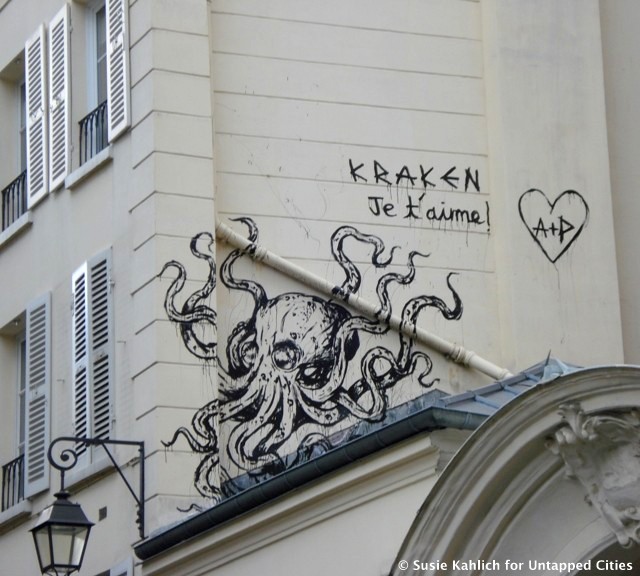
Walking through the streets of Paris, you see it and you don’t see it: a crude 1980s video game character; a grinning yellow cat; a bowlered man chasing a balloon. And that’s just what you catch out of the corner of your eye.
“Do you know what the difference is between graffiti and street art?” Silence. It’s not the usual sort of question posited by a tour guide in Paris, but then Demian Smith is not your usual sort of tour guide. Tall and lanky and a bit scruffy, Demian looks more like the artists whose work he promotes rather than the visitors he takes on tour. Demian runs Underground Paris, a passionate and informed street art news blog, and provides guided tours of Paris’ best street art.
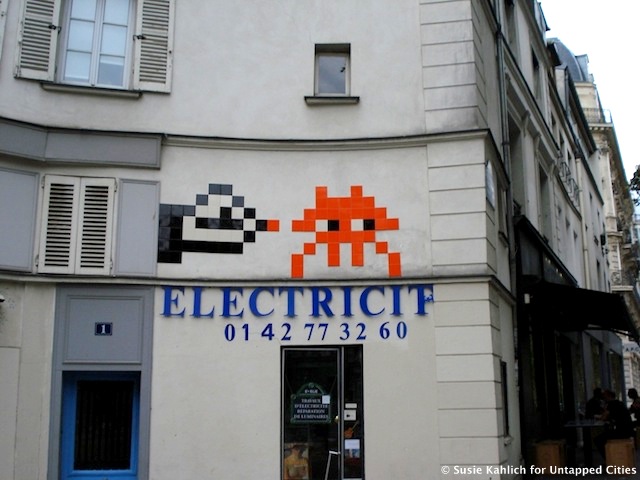
Street art is an integral part of the Parisian cityscape. While a form of Parisian street art itself came out of the May ’68 student protests, it did not truly blossom until the 1980s, mostly in Lower Belleville and Menilmontant.
Nineteen-seventies graffiti culture, with its colorful, fluid typography, informed New York’s Lower East Side neo-expressionism (Keith Haring, Jean-Michel Basquiat, Rivington School); the same movement influenced Paris street artists with its mélange of hip hop culture and social impact, who quickly embraced and grew the medium into something very much its own.
But where New York’s 1980s LES artists returned to galleries and collectors, the Paris street art movement remained stubbornly proletarian and dedicated to the streets, influencing in its turn Anglo street artists such as Shephard Fairey in the US and Banksy in the UK, and often surpassing their US & UK counterparts to become some of the best known street artists in the world today.
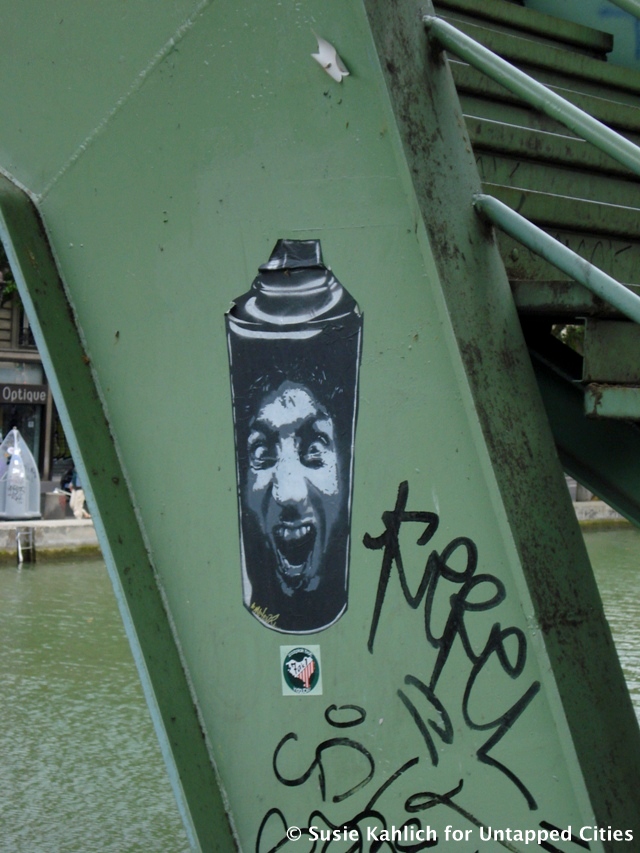
Over its 40+ year history in Paris, street art has been an integral part of the city and has spread to all 20 arrondissements. From the sometimes crude and stylized stencils of C215, Blek le Rat and Miss Tic, to the delightfully whimsical works of Nemo and Fred Le Chevalier, all the way to the ubiquitous, iconic Space Invader, Paris street art is as treasured in the city as the Mona Lisa at the Louvre.
Graffiti artists and street artists are two very different species that seldom cross over. Graffiti remains the domain of kids from the banlieue, for whom getting up is keeping it real and who harbor a not-unfounded mistrust of street art and street artists, even though graffiti itself is a recognized art form. “It’s modern-day calligraphy,” as one young street artist puts it. Indeed, graffiti is the domain of typography and tagging – speaking mainly to other graffiti artists to strut their stuff and mark territory.
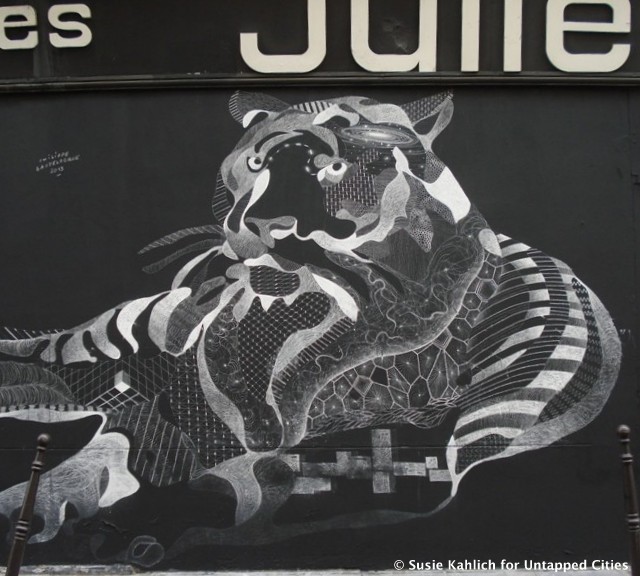
Street art, on the other hand, is about interacting with the environment, the viewer, and the city itself. It’s about subversion – in advertising, politics, society at large – but it’s also about visual poetry, impacting the viewer faster than graffiti through pictorial storytelling… and sometimes simply about beauty. It can be incredibly simplistic, or highly conceptual: take Space Invader for example, who has installed his space invader iconography throughout Paris and across the world in major cities that, when the installations are mapped out, create a giant, global space invader only visible from space.
Simple beauty or social statement, street art is a also dangerous prospect – which only adds to its sex appeal. In France, street art and graffiti carry a minimum €1,500 fine and possible jail time if caught. Turf wars can break out among street artists when someone paints over another’s work. And of course there’s simply the inherent risk of your work getting painted over by the city the next morning. Art or defacement? It’s all in the eye of the beholder.
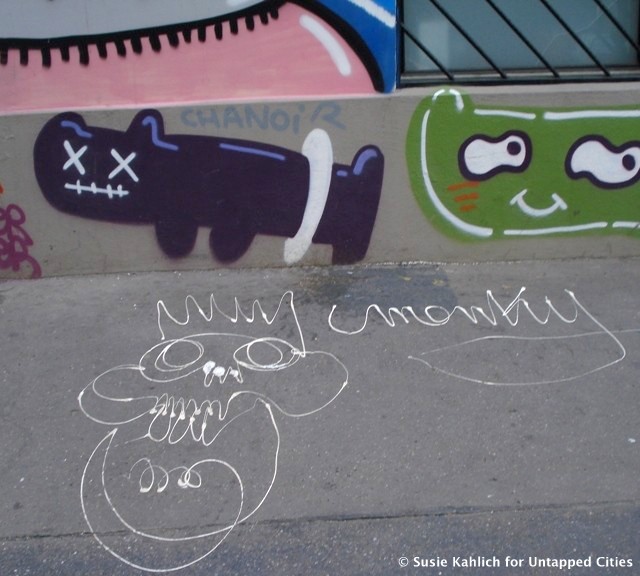
Once Demian opens your eyes to it, it’s everywhere. From Belleville to quai d’Austerlitz and beyond, the sheer amount and variety of work on display is breathtaking, from the old guard classics like Jeff Aerosol’s giant Dali in Beaubourg, to exciting up-and-comers like Zoo Project and Monky.
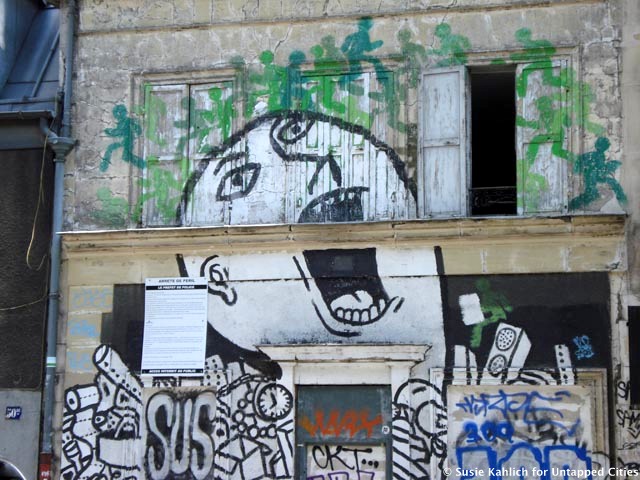
Demian’s candor, along with his street smarts, that has won the trust of the artists Demian interacts with – no small feat in a field where anonymity is a necessity. Formerly a financial journalist followed by a stint as a gossip columnist for the Daily Mail, Demian joined an early graffiti crew in London, eventually diving into the world of London’s street art scene himself. Now he documents the ever-evolving movement, interviews artists on his blog, and works with galleries who represent the artists to promote their work.
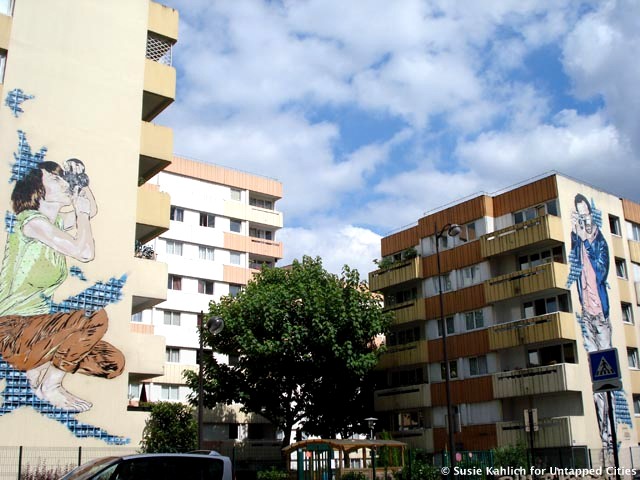
Back on the street art tour, we pull up in front of giant self-portraits of French-German artists Janna & JS on the side of an apartment complex in the 13th. “What do you see here?” asks Demian, like your favorite art teacher. There are no wrong answers; he merely asks you to interact with the art, question it, question the environment it’s in, and explore your relationship to it. Which is the function of street art, after all. It’s meant to interact with the environment, to be temporary and to decay, eventually to fade away. That’s part of the art itself. It is a gift to the city as much as it is an expression of the artist.
Get in touch with the author at www.susiekahlich.com.





